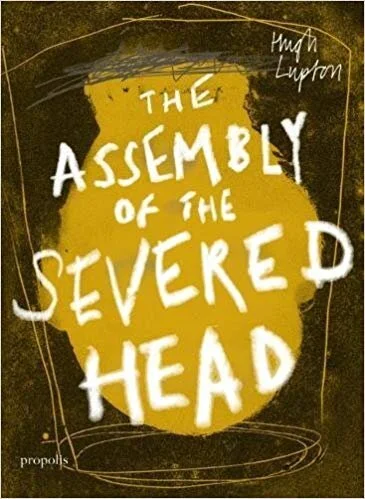Welsh myth – A Review of ‘Assembly of the Severed Head’ by Hugh Lupton
There are several versions available of the Welsh myth ‘The Mabinogion’ but Hugh Lupton’s is strikingly effective. For Mabinogion geeks like myself the texts as they have come down to us in modern Welsh and English translations are a mine of wonder and magic about the soul of the country where I live. However, for those not so obsessive about Welsh mythology it may not be so easy. The stories’ stubborn refusal to explain themselves and the lack of context given in the surviving manuscripts can make them hard to get into.
Welsh Myth Made New
Hugh Lupton’s solution is neat and inspired. He does not treat the material as existing in some nebulous, Celtic past. Instead, he places it in a very clear historic period. Llywelyn ab Iorwerth was prince of Gwynedd in north Wales in the thirteenth century. He married the illegitimate daughter of the English King John. At that time the descendants of the Norman invaders had not completely conquered Wales. Nevertheless King John planned to weaken his Welsh son-in-law’s political and military power. The story starts with military defeat for Llywelyn, occupation of much of his land and the massacre of the bards in a bardic school. Only one old bard who had all the old Welsh myths in his head was left and he did not have long to live.
This book weaves the final great storytelling performances of the old bard with the political machinations of the time. Llywelyn reasserts his power against the invaders and a touching love story develops that combines both urgency and tenderness.
Llech Ronw/Gronw’s Stone, Eryri/Snowdonia, North Wales
Balancing Gender and Religion
The precarious balance of the genders is a clear theme in this book. The old bard must have both male and female listeners present to tell this old Welsh myth. The great characters of Blodeuwedd, Rhiannnon and Branwen have a clear and determined presence in this telling. As has Siwan, Llywelyn’s Norman-French wife, who has gone completely native and allies herself with her husband’s people against her father John, the English king.
Unlike much of the rest of European courtly literature of the time there is no overt Christianity in the stories. The word ‘God’ exists mainly as part of a greeting or oath. Although there is no priestly class in the stories it is possible that there was a Druidic content in the stories before they were committed to vellum. However I find it a relief that these stories are a priest-free zone. The Wales of the Middle Ages was a deeply Catholic country and the tensions between the Catholic and Mabinogion world views are a central part of this retelling.
Harlech Castle. Starting point for the Second Branch of the Mabinogi
Stories for the Telling
In this novel the characters use the old Welsh myths to understand the world together. There are regular reminders that this is public material that demands orality to function. So, an intimate connection develops between the stories and the Welsh landscape. In this way the songlines of the Mabinogion weave their way into the mountains, lakes and rivers of this land.
The Catholic and Mabinogion worlds live uneasily side by side in this book and the characters have to negotiate their way between them. The small group of listeners comment on and discuss the stories and sometimes interject in the actual telling. This is just what contemporary storytelling audiences do today. The stories pull everyone into the tales the old bard tells, even the monk who is writing them down.
Although set in the past, the medieval characters in this novel have to navigate issues that contemporary readers will resonate with. Juggling competing and incompatible world views on a daily basis, war and dislocation and pitting hope against fear.
Tools for Living in Difficult Times
This is a lively and readable version of old Welsh myth. In the writing you can even hear the clear, clipped style that comes from the manuscripts. For the more historical parts the author changes between to a more detailed style that we expect from the novel form. The changing focus from the Mabinogion stories to the lives of those who listen to them helps to save the old material from languishing in the Literary Treasure cupboard. Rather, it reinvigorates them as tools for living in difficult times and a reminder that we are living, in the words of the Welsh poet Waldo Williams, ‘mewn cwmwl tystion’/‘in a cloud of witnesses’.
The Assembly of the Severed Head is published by and available fom Propolis or click here for amazon uk
Pig Boy is also based on a story from the Welsh myth cycle the Mabinogi


